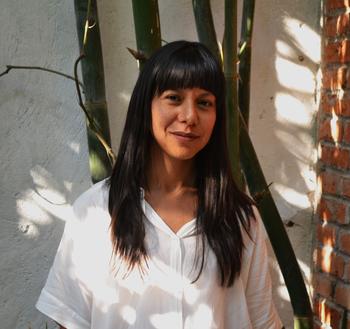Betsabé Piña Morales

International Research Training Group "Temporalities of Future"
PhD Student
Anthropology
Project: "Agreements and disagreements in heritage conservation and protection practices in the Mixtec territory. The case of the Mixteca Alta Global Geopark, UNESCO"
Education
|
Since 04/2024 |
PhD Candidate, International Research Training Group ‘Temporalities of Future’ |
|
Since 09/2021 |
PhD Candidate in Anthropology, Research Center and Higher Studies in Social Anthropology (CIESAS). |
|
09/2019 – 08/2021 |
Master in Social Anthropology, Research Center and Higher Studies in Social Anthropology (CIESAS). |
|
09/2019 – 08/2021 |
Master in Psychoanalytic Theory. Colegio de Psicoanálisis Lacaniano (CPL) |
|
01/2008 – 07/2012 |
Bachelor in Arqueología in Archeology. National School of Anthropology and History (ENAH) |
|
08/2004 – 07/2008 |
Bachelor in Psichology. National Autonomous University of Mexico (UNAM). |
Work experience
|
09/2014 – 05/2019 |
Archaeologist, Archaeological Salvage Directorate – INAH, Project: Archaeological Salvage inside Lake Texcoco in its eastern area. |
|
09/2015 – 02/2016 |
Curator, “Atotonilli” Community Museum |
|
01/2011 – 08/2014 |
Psychologist/Directorate of Human and Social Development, Self-Sustainable Women A.C., Area: Institutional Development |
Project: "Agreements and disagreements in heritage conservation and protection practices in the Mixtec territory. The case of the Mixteca Alta Global Geopark, UNESCO"
Supervisors: Dra. Emiliana Cruz Cruz y Dra. Gladys Tzul Tzul
The Mixteca Alta, an area that has been inhabited by human groups for at least 5,000 years (Spores, 1984), is considered an area of ecological wear because to the strong droughts and eroded soils that the region has suffered historically (Guerrero et al. , 2010 in Oropeza et al, 2016: 75). However, actually the Mixtec people have known how to cohabit and knowing their environment intimately. But not without facing several social, political and economic inequalities.
Also, conservation policies for geological, natural, and cultural heritage are an attempt to safeguard tangible and intangible heritage for the future. In addition to the pristine protection of reserved spaces. This research focuses on the study of the recent Mixteca Alta Global Geopark, UNESCO as a model of geological conservation thanks to the importance of the region.
It is important to note that global and state institutions have promoted strategies to promote sustainable projects, which seek to generate local jobs through the commercialization and touristification of space (Hieraux and González: 2014). It is considered necessary to conserve geological, natural and cultural heritage so that future generations can learn about this heritage. Given this, it is worth asking ourselves: what changes will heritage undergo in the future? Who are the future generations for whom heritage is preserved? What place and role do current the locals?
This research seeks to insert itself into the anthropological theorization of temporalities, particularly to delve into the field of anthropology of the future. On the one hand, reading the past generates local future projections; this has a strong relationship with global effects and their dialogue with commodities (Apadurai, 2013; Bear, 2017). On the other hand, in crisis contexts it is possible to identify categories of analysis linked to anticipation, speculation, projection and expectation. Protection and conservation discourses anticipate a possible future and studying this imaginary broadens our commitment to the future: whose future?
Finally, in the present investigation, it is essential to highlight the agency of the Mixtec residents over their territory. The work aims to make contributions on the heterogeneity of epistemological and ontological conceptions on the habitability of the territory. The Mixtec population weaves its history into various long-term processes to ensure that its territory continues to belong to future generations and that they preserve their customs, beliefs and traditions despite the dynamism of contemporary phenomena.
Chapters (selection)
Hermann, Manuel, Betsabé Piña, Norma López, Marta Martín, Rubén Langlé (2023) “Yodo Tindaka (Llano de las Avispas): identificación histórica, geográfica y territorial de un sitio arqueológico en la Mixteca Alta”. Herman, Manuel, Cartografía Mixteca. Estudios multidisciplinarios sobre territorios y comunidades. México:El Colegio Mexiquense.
Articules (selection)
Piña, Betsabé y Manuel Hermann (2022): Rastros y rostros del patrimonio arqueológico, histórico y biocultural de la Mixteca. Revista digital Ichan Tecolotl. Número 364.
Piña, Betsabé (2022): “Fisuras en la legislación de la protección y conservación del patrimonio arqueológico. El papel del Estado, lo privado y lo local”. Revista digital Ichan Tecolotl. Número 364.
Piña, Betsabé y Manuel Hermann Coordinadores (2022): “Rastros y Rostros del patrimonio arqueológico, histórico y cultural de la Mixteca”. Revista digital Ichan Tecolotl. Número 364.
Piña, Betsabé y Francisco Cos. (2018): “Salvamento Arqueológico en el exlago de Texcoco, Estado de México. Zona propuesta para la construcción del NAIM”. Mediateca INAH.


